The Risks and Rewards of Automated Customer Service
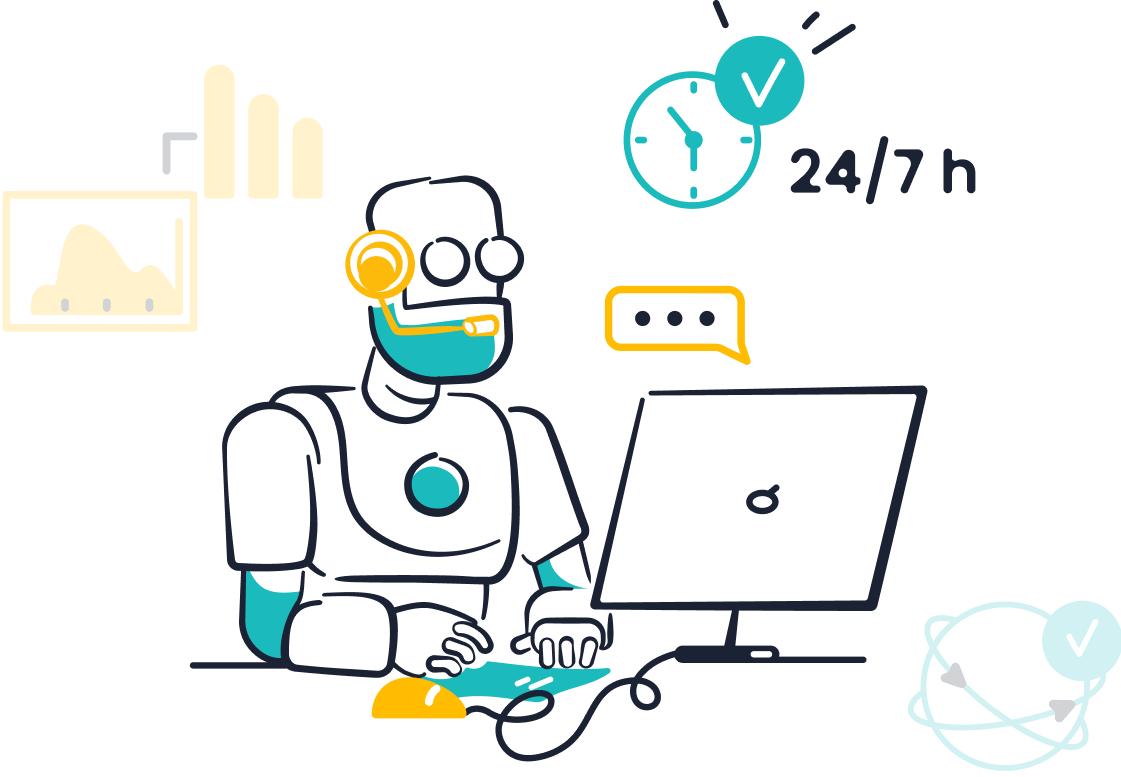
Automated customer service leverages advanced technologies like AI to revolutionize how businesses engage with their customers. It has become an essential asset in today's industries, enabling companies to respond more quickly and efficiently. For example, 63% of retailers now rely on AI to elevate customer experiences, and 40% of all customer interactions are now automated, a significant increase from just 25% three years ago. Companies like Sobot provide innovative solutions to help businesses implement automated customer service, enhancing satisfaction while reducing costs. With the conversational AI market expected to reach $14 billion by 2025, the significance of this technology continues to expand rapidly.
The Rewards of Automated Customer Service

Cost-Effectiveness and Operational Efficiency
Automated customer service offers a significant advantage in reducing costs and improving operational efficiency. By automating routine tasks, you can save on hiring and training expenses, as fewer agents are needed to handle repetitive inquiries. For instance:
- Automating customer interactions can cut service costs by up to 75%, saving companies millions annually.
- Businesses using automation report a 35% improvement in task completion rates for lower-performing agents, leading to faster and more productive support.
- Customer support automation can reduce overall service costs by 40%, while boosting productivity by up to 50%.
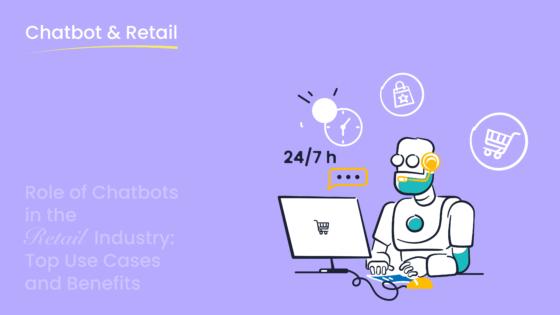
Sobot’s AI-powered chatbot exemplifies this efficiency. It operates 24/7, autonomously resolving common queries and assisting agents, which improves productivity by 70%. Additionally, it reduces service costs by up to 50%, making it a cost-effective solution for businesses of all sizes. These benefits not only enhance your bottom line but also free up resources to focus on more complex customer needs.
Scalability for Growing Businesses
As your business grows, handling an increasing volume of customer inquiries becomes challenging. Automated customer service provides the scalability you need to manage this growth effectively. Flexible systems, like Sobot’s omnichannel chatbot, adapt to sudden demand surges, ensuring seamless customer interactions across platforms such as WhatsApp, SMS, and live chat. This scalability allows you to maintain high service standards even during peak periods.
For example, OPPO, a global leader in smart devices, leveraged Sobot’s chatbot to handle a surge in customer inquiries during shopping festivals. The chatbot resolved 83% of queries autonomously, enabling human agents to focus on complex issues. This approach not only improved efficiency but also increased OPPO’s repurchase rate by 57%. By implementing scalable solutions, you can enhance customer experience, drive revenue growth, and stay competitive in a dynamic market.
24/7 Availability and Faster Response Times
One of the most compelling benefits of automated customer service is its ability to provide round-the-clock support. Unlike human agents, chatbots and automated systems never take breaks, ensuring your customers receive immediate assistance at any time. This 24/7 availability significantly improves response times, with 80% of businesses reporting faster resolutions through self-service options.
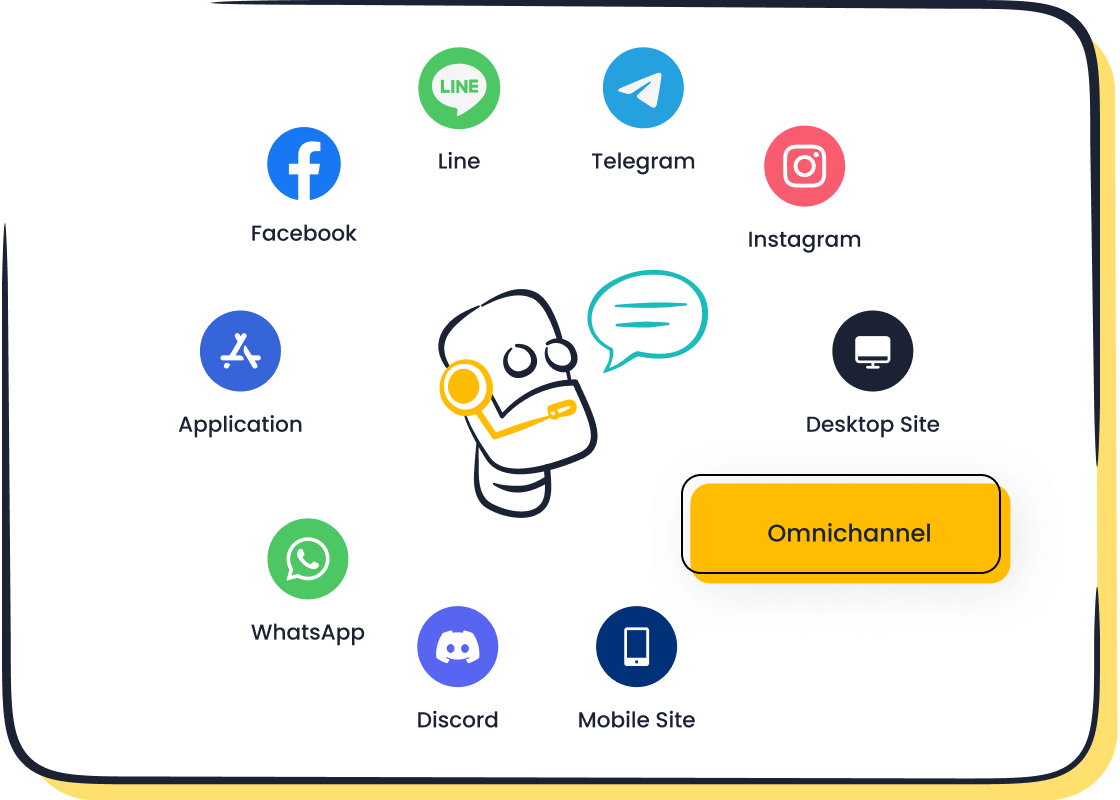
Sobot’s chatbot, for instance, operates full-time online, offering instant replies to customer inquiries. Its multilingual capabilities ensure that customers from diverse backgrounds can communicate in their preferred language, further enhancing satisfaction. Faster response times not only reduce customer frustration but also build trust and loyalty, which are crucial for long-term success.
By automating customer service, you can meet the growing expectations of today’s consumers while maintaining efficiency and cost-effectiveness. Whether it’s through cost savings, scalability, or 24/7 availability, automation empowers your business to deliver exceptional service consistently.
Enhanced Customer Satisfaction Through Automation
Automated customer service plays a vital role in improving customer satisfaction. By delivering consistent and accurate responses, automation ensures that your customers feel valued and understood. Unlike human agents, automated systems like chatbots can handle multiple inquiries simultaneously without delays. This reduces wait times and enhances the overall customer experience.
For example, Sobot’s AI-powered chatbot provides instant replies to common questions, ensuring your customers receive the information they need without frustration. Its multilingual capabilities allow you to connect with a global audience, making every interaction more personalized. According to a study by Salesforce, 89% of consumers are more likely to make another purchase after a positive customer service experience. By automating routine tasks, you can focus on creating meaningful interactions that build loyalty and trust.
Automation also minimizes errors in responses. Human agents may occasionally provide inconsistent answers, but automated systems rely on a well-structured knowledge base. This ensures that every customer receives the same high-quality support. Sobot’s chatbot, for instance, uses a knowledge base built from various sources like articles and PDFs. This guarantees accurate and reliable answers, further boosting customer satisfaction.
Data-Driven Insights for Better Decision-Making
Customer service automation doesn’t just improve interactions; it also provides valuable data to help you make informed decisions. Automated systems collect and analyze customer interactions, offering insights into behavior, preferences, and pain points. These insights allow you to identify trends and adjust your strategies to meet customer needs more effectively.
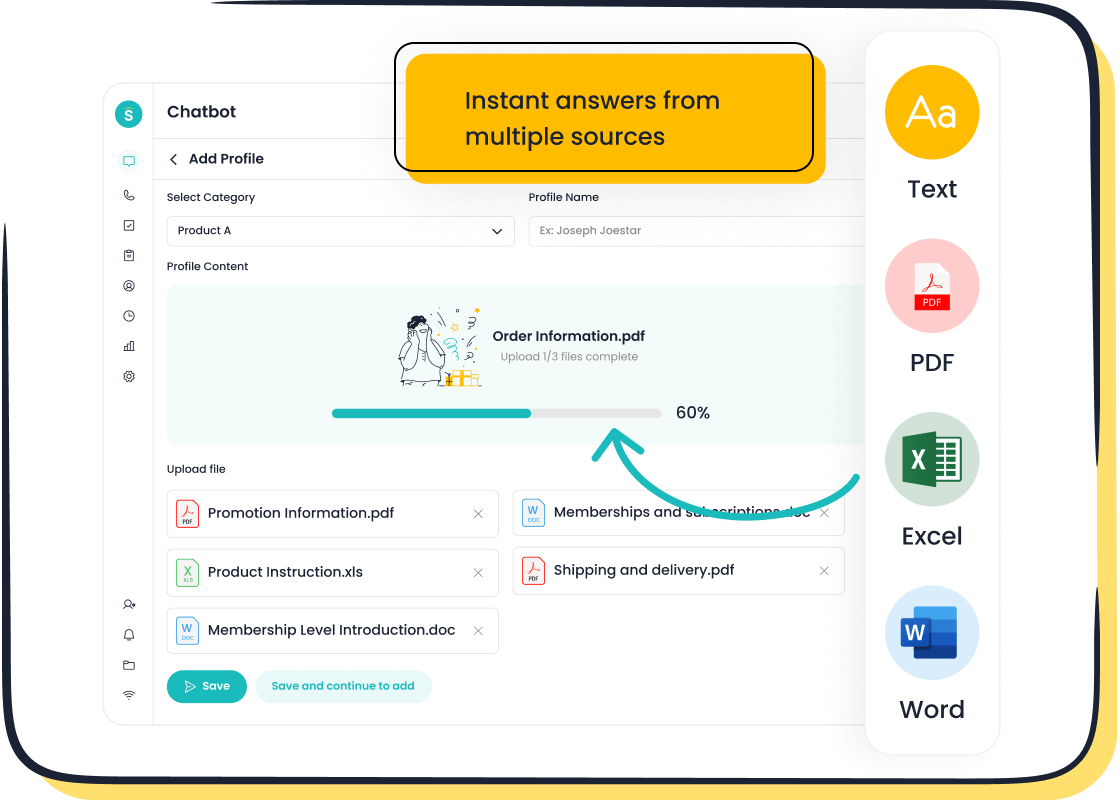
Sobot’s solutions, for instance, include advanced reporting features that track key performance indicators (KPIs) like resolution rates and customer feedback. By analyzing this data, you can pinpoint areas for improvement and optimize your operations. For example, if you notice a high volume of inquiries about a specific product feature, you can update your knowledge base or provide additional training for your team.
Predictive analytics is another powerful tool enabled by automation. It helps you anticipate customer needs before they arise. For instance, Sobot’s AI solutions use predictive analytics to identify potential issues and offer proactive support. This not only enhances the customer experience but also reduces the likelihood of complaints or escalations.
In today’s competitive market, data-driven decision-making is essential for staying ahead. By leveraging the insights provided by automated customer service, you can refine your strategies, improve efficiency, and deliver exceptional service.
The Risks of Automated Customer Service
Lack of Personalization and Human Touch
Automated customer service systems often lack the warmth and empathy that human agents provide. While automation excels at handling routine inquiries, it struggles to replicate the personal connection that customers value. For instance, 90% of people prefer interacting with a human for customer service, and 61% believe humans understand their needs better. This preference stems from the perception that human agents offer more thorough answers and a wider range of solutions.
| Statistic | Percentage | Description |
|---|---|---|
| Prefer human interaction | 90% | People prefer interacting with a human for customer service over a chatbot. |
| Believe humans understand needs better | 61% | Customers feel humans are more attuned to their needs. |
| Feel humans provide thorough answers | 53% | Customers think humans give more comprehensive responses. |
| Find humans less frustrating | 52% | Customers believe human agents are less frustrating to deal with. |
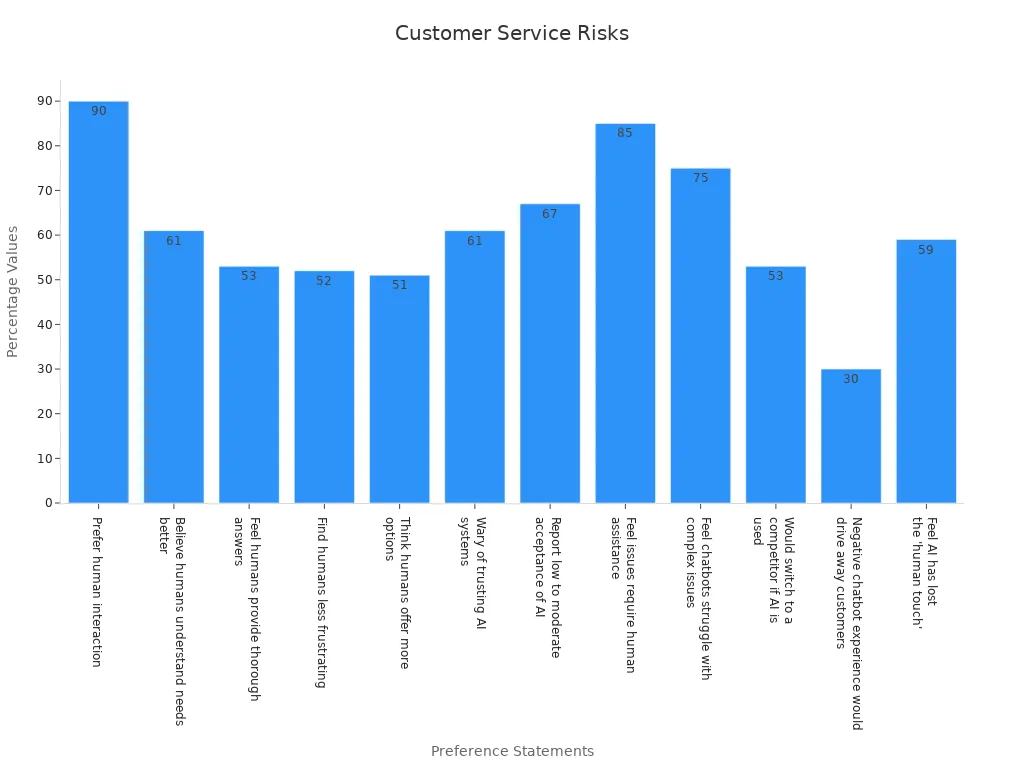
Additionally, customers expect personalized experiences. A McKinsey study reveals that 71% of customers feel frustrated when interactions lack personalization, and 62% may lose loyalty to brands that fail to deliver tailored experiences. Automated systems often rely on pre-programmed responses, which can feel impersonal and generic. This limitation can deter customers from engaging with your brand, especially when they seek a more human touch.
| Percentage | Description | Source |
|---|---|---|
| 71% | Customers expect personalized experiences | McKinsey |
| 76% | Customers express frustration when not receiving personalized experiences | McKinsey |
| 62% | Brands lose customer loyalty due to un-personalized experiences | Segment |
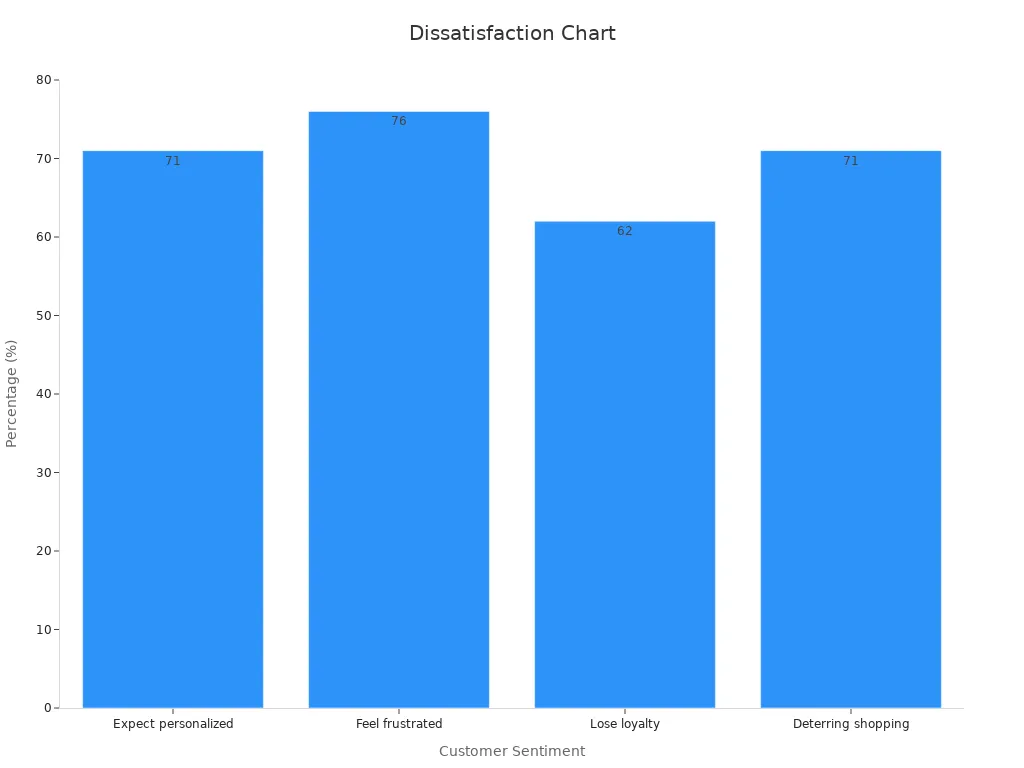

To address this, you can integrate tools like Sobot’s AI-powered chatbot, which offers multilingual support and customizable workflows. These features help create a more personalized experience, bridging the gap between automation and human interaction.
Challenges in Handling Complex or Emotional Issues
Automated systems often falter when dealing with complex or emotionally charged situations. While they excel at resolving straightforward queries, they may struggle to interpret nuanced customer concerns. For example, 75% of customers believe chatbots fail to handle complicated issues effectively. This limitation can lead to frustration, especially when customers feel their problems require human intervention.
Emotional intelligence is another area where automation falls short. Human agents can empathize with customers, offering reassurance and understanding during stressful situations. Automated systems, however, lack the ability to convey genuine empathy. This gap can result in a negative customer experience, potentially driving customers to competitors. In fact, 53% of customers would switch to a competitor if they had a poor experience with AI-driven support.

To mitigate these risks, consider implementing a hybrid approach. Sobot’s solutions, for instance, combine AI capabilities with human fallback options. This ensures that complex or emotional issues are escalated to skilled agents, maintaining a high standard of customer care.
High Initial Implementation Costs
The upfront costs of deploying automated customer service systems can be a significant barrier for many businesses. Developing and integrating AI-powered tools often require substantial investment in technology, infrastructure, and training. Small and medium-sized enterprises may find these costs particularly challenging, as they often operate with limited budgets.
However, the long-term benefits can outweigh the initial expenses. Automated systems like Sobot’s chatbot reduce operational costs by up to 50% and improve productivity by 70%. These savings can offset the initial investment over time, making automation a cost-effective solution in the long run.
To maximize your return on investment, start by identifying areas where automation can deliver the most value. Focus on repetitive tasks and high-volume inquiries, and gradually expand your automated capabilities. This phased approach allows you to manage costs effectively while reaping the benefits of automation.
Risk of Technical Failures and Downtime
Automated customer support systems rely heavily on technology, making them vulnerable to technical failures and downtime. These disruptions can severely impact your ability to provide consistent service. For instance, if your chatbot or automated ticketing system goes offline, customers may face delays or unresolved issues, leading to dissatisfaction. A single hour of downtime can cost businesses thousands of dollars, especially during peak periods like holiday sales.
To understand the scope of these risks, consider the following metrics used to measure system reliability and recovery:
| Metric | Description |
|---|---|
| Mean Time to Repair (MTTR) | Average time taken to fix a failed system and restore it to full functionality. |
| Mean Time to Acknowledge (MTTA) | Average duration for recognizing an incident after an alert is issued. |
| Mean Time Between Failures (MTBF) | Average time between one failure and the next, indicating system reliability. |
| Mean Time to Detect (MTTD) | Average time taken to detect an issue after it starts. |
| Failure Rate | Frequency of failures expressed as failures per unit of time. |
These metrics highlight the importance of robust systems and quick recovery protocols. For example, Sobot’s AI-powered solutions maintain a system stability rate of 99.99%, ensuring minimal downtime. This reliability is critical for businesses that depend on automated customer service to handle high volumes of inquiries.
To mitigate risks, you should invest in regular system maintenance and monitoring. Tools that provide real-time alerts can help you detect and address issues before they escalate. Additionally, having a backup plan, such as a human fallback option, ensures uninterrupted service even during technical glitches.
Customer Frustration with Poorly Designed Systems
Poorly designed automated customer support systems can frustrate your customers instead of helping them. Common issues include confusing interfaces, irrelevant responses, and limited problem-solving capabilities. For example, a chatbot that fails to understand customer queries or provides generic answers can leave users feeling ignored. Studies show that 73% of customers abandon brands after just one negative experience with automated customer support.
Imagine a scenario where a customer tries to resolve a billing issue through an automated system but encounters repeated errors. This experience not only wastes their time but also damages their trust in your brand. To avoid such pitfalls, you must prioritize user-friendly designs and thorough testing.
Sobot’s chatbot addresses these challenges by offering customizable workflows and multilingual support. These features ensure that your customers receive accurate and relevant assistance, regardless of their language or location. Additionally, Sobot’s AI solutions use a knowledge base built from reliable sources, reducing the likelihood of incorrect responses.
When implementing customer support automation, focus on simplicity and clarity. Provide clear instructions and ensure your system can handle a wide range of queries. Regular updates and user feedback can also help you refine your system over time. By doing so, you can turn automation into a tool that enhances, rather than hinders, the customer experience.
Balancing Automation with Human Interaction
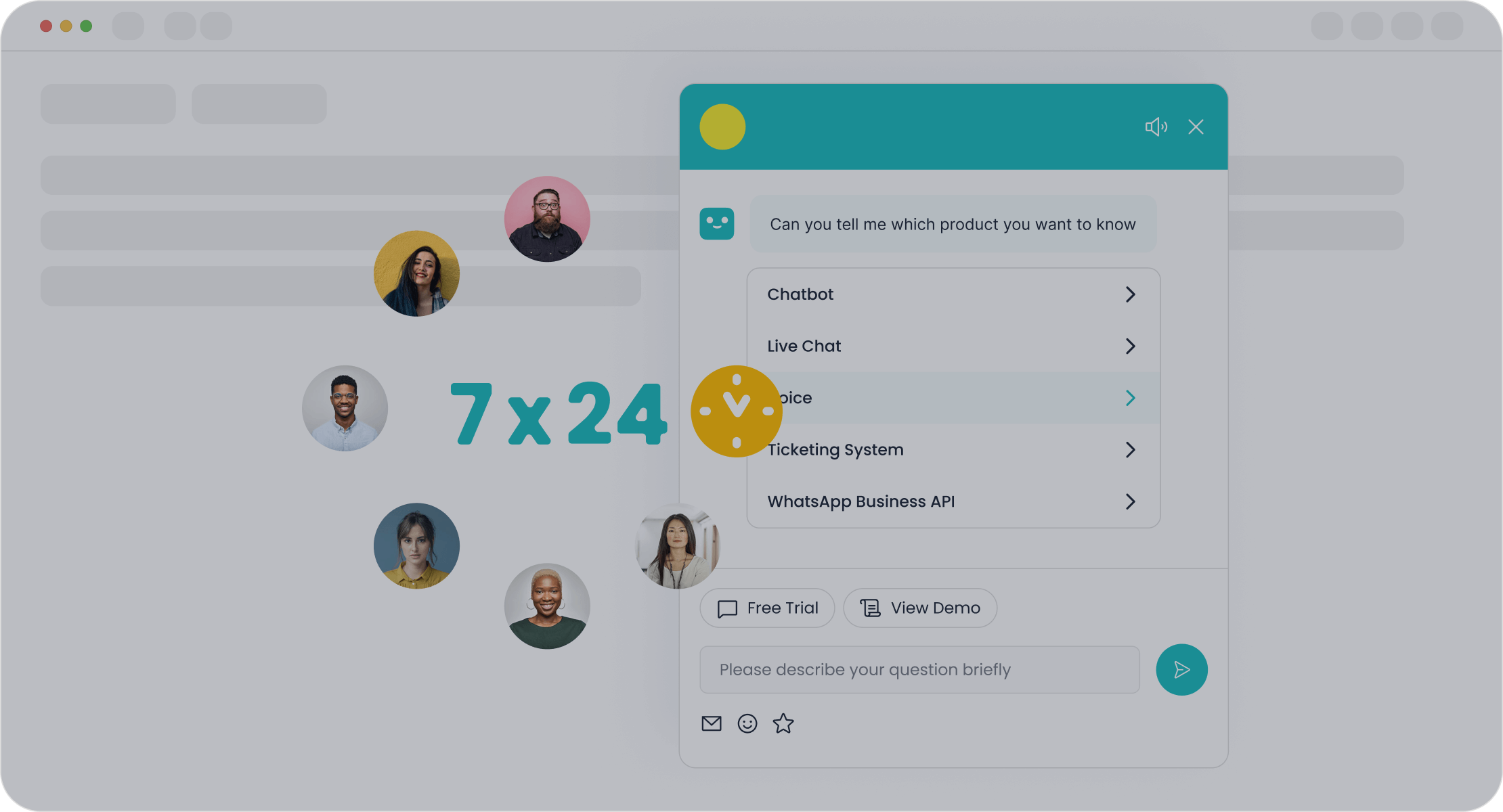
Identifying the Right Use Cases for Automation
Automation works best when applied to repetitive and straightforward tasks. Identifying these tasks ensures that your automated systems deliver maximum efficiency without compromising customer satisfaction. For example, automating FAQs, order tracking, or appointment scheduling can free up human agents to focus on more complex issues.
A great example comes from Estee Lauder, which implemented a unified messaging platform to handle omnichannel support. This strategy allowed their agents to manage multiple inquiries simultaneously, improving response times and operational efficiency. Similarly, Sobot’s AI-powered chatbot excels in automating routine queries, offering 24/7 support across platforms like WhatsApp and SMS. By focusing automation on high-volume, low-complexity tasks, you can enhance both efficiency and customer experience.
| Company | Automation Strategy | Customer Service Outcomes |
|---|---|---|
| Estee Lauder | Implemented Glassix unified messaging platform for omnichannel support. | Enhanced customer satisfaction through faster response times and personalized service. |
| Hertz | Adopted Glassix's unified messaging platform for multi-channel support. | Increased service speed and efficiency through chatbot handling of inquiries. |
Ensuring Seamless Integration with Existing Systems
For automation to succeed, it must integrate seamlessly with your existing systems. Poor integration can lead to data silos, inefficiencies, and customer frustration. A well-integrated system ensures that automated tools work alongside your CRM, ticketing systems, and communication channels.
Sobot’s solutions, for instance, unify customer interactions across multiple platforms, creating a centralized workspace for agents. This integration eliminates data fragmentation, enabling agents to access customer information instantly. As a result, businesses can provide faster and more personalized support. By ensuring seamless integration, you can maximize the benefits of automation while maintaining operational continuity.
Maintaining a Human Fallback Option for Complex Issues
Even the most advanced automated systems cannot replace human empathy and adaptability. Customers often prefer speaking to a human agent for complex or emotionally charged issues. In fact:
- 53% of consumers prefer live agents for complex problems.
- 76% say a negative experience would influence their future brand choices.
Human fallback options ensure that unresolved queries are escalated to skilled agents. Sobot’s chatbot, for example, includes escalation features that transfer complex cases to human agents. This hybrid approach maintains customer trust and satisfaction. Additionally, fallback mechanisms allow businesses to address errors or limitations in automated systems, ensuring uninterrupted support.
By balancing automation with human interaction, you can create a customer service strategy that combines efficiency with empathy. This approach not only enhances customer satisfaction but also strengthens brand loyalty.
Regularly Monitoring and Updating Automated Systems
Automated customer service systems require regular monitoring and updates to maintain their effectiveness. Technology evolves rapidly, and customer expectations shift just as quickly. If you neglect updates, your system may fail to meet customer needs or handle new types of inquiries. Regular monitoring ensures your system performs optimally and identifies areas for improvement.
For example, Sobot’s AI-powered chatbot includes advanced reporting tools that track key performance indicators (KPIs) like resolution rates and customer feedback. These insights help you identify gaps in your knowledge base or areas where the chatbot struggles. By addressing these issues promptly, you can ensure your system remains reliable and efficient.
Updates also allow you to integrate new features or improve existing ones. For instance, adding multilingual capabilities or enhancing predictive analytics can make your system more versatile. Sobot’s chatbot, which supports multiple languages and operates 24/7, exemplifies how updates can enhance functionality. Regular updates also ensure compliance with data protection regulations, safeguarding customer trust.
To keep your system up-to-date, establish a routine for reviewing performance metrics and implementing updates. Use tools that provide real-time alerts for technical issues. This proactive approach minimizes downtime and ensures your automated system continues to deliver exceptional service.
Training Staff to Work Alongside Automation
Automation doesn’t replace human agents; it complements them. Training your staff to work alongside automated systems ensures a seamless customer experience. When agents understand how to use these tools effectively, they can focus on complex issues while automation handles repetitive tasks.
Training improves key metrics that reflect customer service quality. For example:
| Metric | Description |
|---|---|
| First contact resolution (FCR) | Measures the efficiency of resolving customer inquiries in a single interaction. |
| Customer satisfaction score (CSAT) | Indicates customer happiness with the service provided. |
| Self-service resolution rate | Assesses the effectiveness of self-service options available to customers. |
| Tickets closed per agent | Reflects the productivity and efficiency of customer service agents. |
Sobot’s solutions, such as its AI-powered chatbot, enhance agent productivity by 70%. Training your team to use these tools ensures they can leverage automation to improve first contact resolution and customer satisfaction scores. For instance, agents can use AI copilots to generate quick, accurate responses, reducing wait times and improving customer experiences.
Invest in regular training sessions to familiarize your staff with new features and updates. Encourage them to provide feedback on the system’s performance. This collaborative approach ensures your team and automated tools work together effectively, delivering the best possible service to your customers.
Real-World Applications of Automated Customer Service
Sobot Chatbot for Common Inquiries
Automated chatbots have transformed how businesses handle customer inquiries. Sobot’s AI-powered chatbot stands out as a reliable solution for addressing routine questions. It operates 24/7, ensuring customers receive immediate assistance without waiting for human agents. With an accuracy rate exceeding 80% and a customer satisfaction score of over 95%, this chatbot delivers consistent and high-quality support.
The chatbot’s ability to autonomously resolve 22.2% of inquiries reduces the workload for your team, allowing them to focus on complex issues. Its multilingual capabilities ensure seamless communication with customers worldwide. For example, OPPO leveraged Sobot’s chatbot during peak shopping periods, achieving an impressive problem resolution rate of 85%. This efficiency contributed to a 57% increase in repurchase rates.
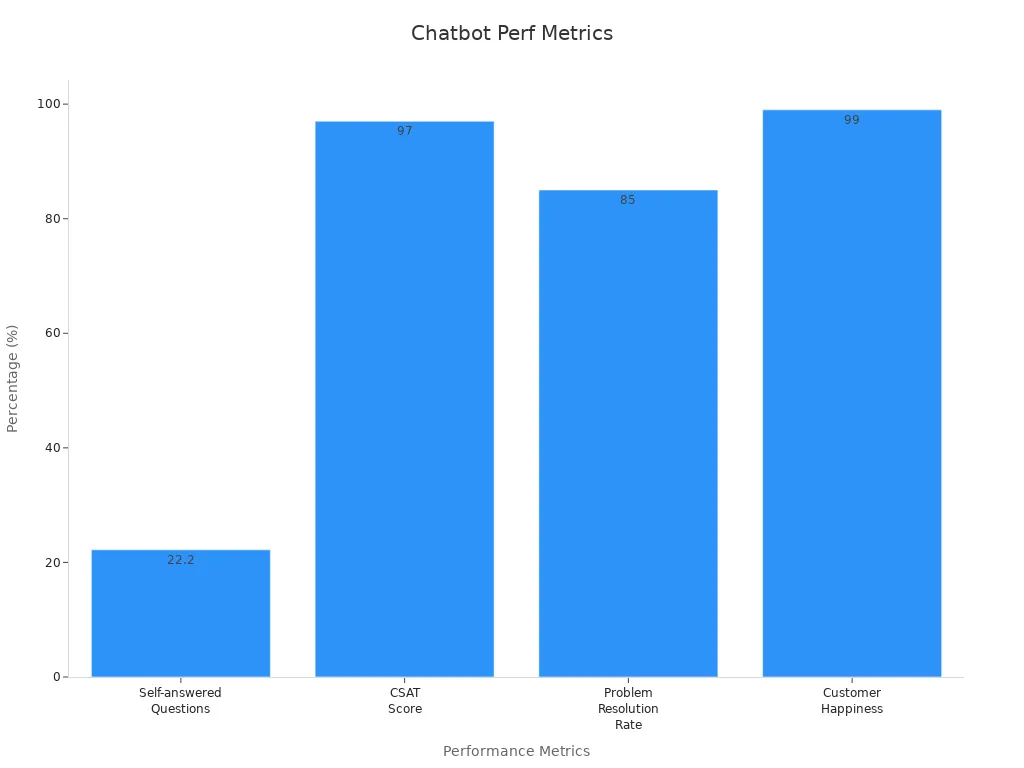
By integrating Sobot’s chatbot into your self-service help centres, you can enhance customer satisfaction while reducing operational costs.
AI-Powered Virtual Assistants in Customer Support
AI-powered virtual assistants have become essential tools for modern customer service. These assistants provide immediate responses, improving customer satisfaction by 68%, even when customers know they’re interacting with AI. They also boost Net Promoter Scores by an average of 16 points, reflecting their positive impact on customer loyalty.
Virtual assistants excel in first contact resolution, improving rates by 15-25%. Sobot’s AI solutions enhance this capability by combining predictive analytics with real-time support. For instance, the platform anticipates customer needs and offers proactive assistance, reducing complaints and increasing engagement.
These assistants also streamline operations by handling repetitive tasks, freeing your agents to focus on more complex inquiries. By adopting AI-powered virtual assistants, you can deliver faster, more efficient service while maintaining high levels of customer satisfaction.
Automated Ticketing Systems for Call Centers
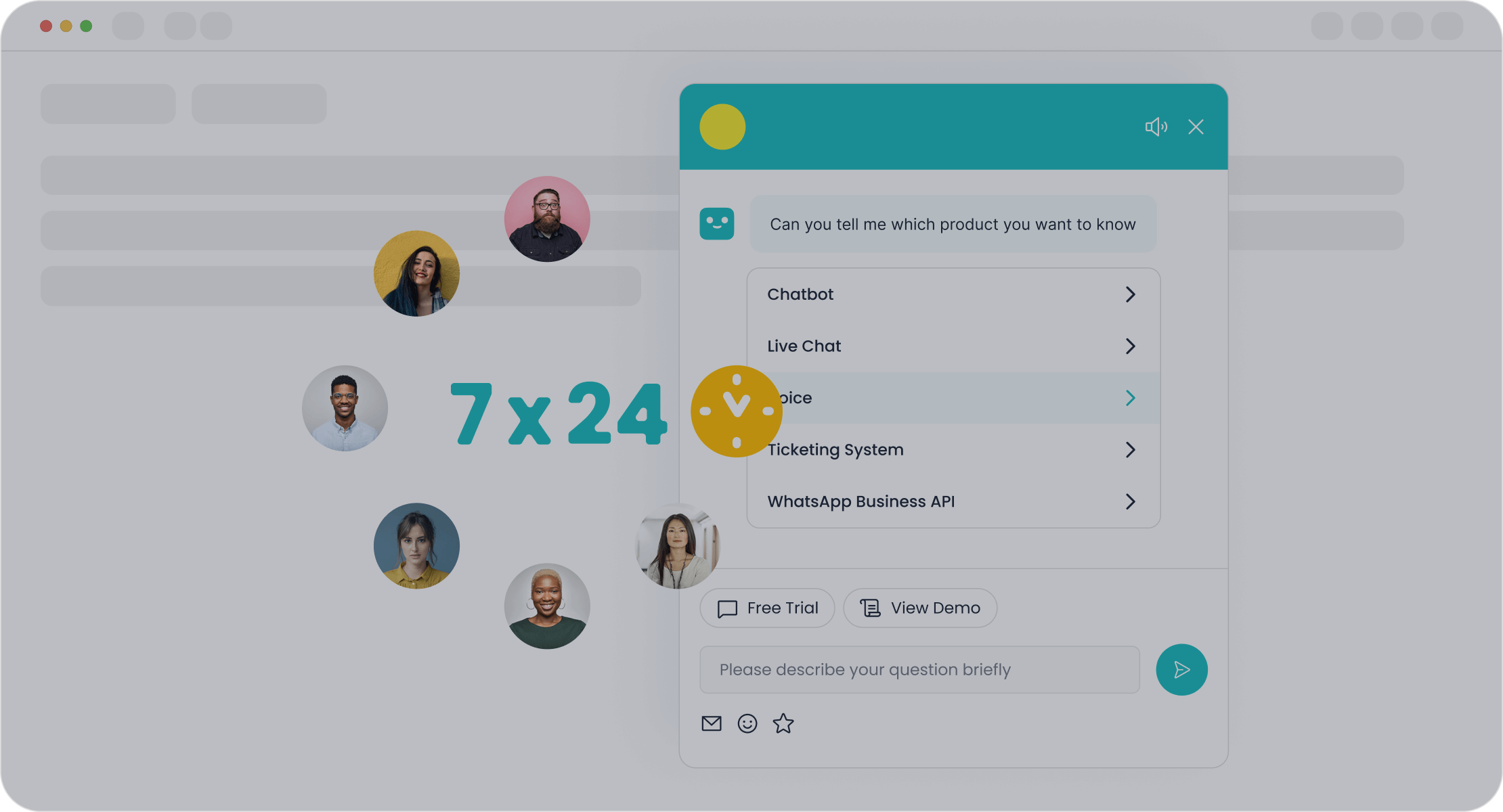
Automated ticketing systems simplify the management of customer inquiries in call centers. These systems categorize and prioritize tickets, ensuring faster resolutions and improved efficiency. For example, Motel Rocks deflected 43% of tickets using AI agents, reducing ticket volume by 50% and increasing customer satisfaction by 9.44%.
Sobot’s ticketing system automates workflows and manages SLAs, ensuring timely responses to customer issues. It integrates seamlessly with communication channels like email and live chat, creating a unified workspace for your team. This integration eliminates data silos, allowing agents to access customer information instantly.
By implementing automated ticketing systems, you can reduce response times, improve agent productivity, and enhance the overall customer experience.
Self-Service Portals for Customer Convenience
Self-service portals have become a cornerstone of modern customer service. These portals empower customers to find answers independently, saving time and reducing frustration. With 73% of customers prioritizing their time, self-service options are no longer a luxury but a necessity. By offering quick access to FAQs, troubleshooting guides, and account management tools, these portals enhance the overall customer experience.
| Metric | Description |
|---|---|
| Reduced Support Ticket Volume | Fewer tickets indicate improved self-service efficiency. |
| Increased User Engagement | Higher interaction levels reflect better adoption. |
| Enhanced Customer Satisfaction | Happier customers show operational success. |
Sobot’s self-service help centres exemplify this efficiency. They integrate seamlessly with other customer support tools, providing a unified experience. For example, Sobot’s AI-powered chatbot works within these portals to resolve common inquiries instantly. This reduces the need for human intervention and ensures customers receive accurate information 24/7. Businesses adopting such solutions often see a significant drop in ticket volume and an increase in customer satisfaction.
By implementing self-service portals, you can empower your customers while streamlining your operations. These portals not only save time but also build trust by offering reliable and consistent support.
Predictive Analytics for Proactive Support
Predictive analytics transforms customer service from reactive to proactive. Instead of waiting for customers to report issues, you can anticipate their needs and address them before they escalate. This approach improves customer satisfaction and reduces complaint rates.
Sobot’s AI solutions leverage predictive analytics to identify patterns in customer behavior. For instance, the system can detect when a customer is likely to abandon their cart and send a timely reminder or offer. This proactive support not only boosts sales but also enhances the customer experience. Businesses using predictive analytics often report higher engagement rates and improved loyalty.
Imagine a scenario where a customer frequently contacts support about a recurring issue. Predictive analytics can flag this pattern, prompting your team to provide a permanent solution. This not only resolves the problem but also demonstrates your commitment to customer care.
By adopting predictive analytics, you can stay ahead of customer needs and deliver exceptional service. This forward-thinking approach ensures your business remains competitive in an ever-evolving market.
Future Trends in Customer Service Automation
Advancements in AI and Machine Learning
AI and machine learning continue to redefine customer service automation. These technologies enable businesses to deliver faster, smarter, and more efficient support. For example, nearly 50% of CEOs believe rising customer expectations will drive the adoption of generative AI. Gartner predicts that by 2026, 80% of customer service organizations will use generative AI to enhance customer experiences. This shift highlights the growing reliance on AI-driven tools to meet evolving demands.
Chatbots powered by AI are becoming more advanced. They now provide efficient support and even personalized financial advice. These advancements improve resolution rates and reduce operational costs. The global customer service automation market, valued at $3.5 billion in 2023, is projected to grow to $15.8 billion by 2032, driven by AI and machine learning innovations. Businesses adopting these technologies gain a competitive edge while improving customer satisfaction.
Increased Personalization Through Automation
Personalization is a key trend in customer service automation. AI-driven tools analyze user behavior to deliver tailored experiences. Companies using AI-powered personalization strategies report a 40% increase in average order value compared to generic approaches. Engagement metrics also show dramatic improvements, with AI-optimized content achieving 83% higher engagement rates.
Automation enhances customer satisfaction metrics like CSAT and CES. For instance, AI insights help businesses refine their messaging and product recommendations, creating more meaningful interactions. The personalization effectiveness coefficient (PEC) for AI-driven strategies is nearly three times higher than standard methods. By leveraging these tools, you can build stronger connections with your customers and boost loyalty.
Integration of Voice Assistants in Customer Support
Voice assistants are transforming customer support by offering faster and more convenient interactions. Studies show that 50% of consumers have used voice assistants for customer service, and 89% prefer brands that offer this technology. Businesses implementing voice AI report a 20-30% reduction in operational costs and a 30% increase in customer satisfaction.
For example, a large telecom company reduced call handling time by 35% using voice AI. These assistants also streamline processes, reducing queue times by up to 50%. Sobot’s AI solutions integrate voice capabilities to enhance customer interactions across platforms. By adopting voice assistants, you can improve efficiency, reduce costs, and meet the growing demand for seamless support.
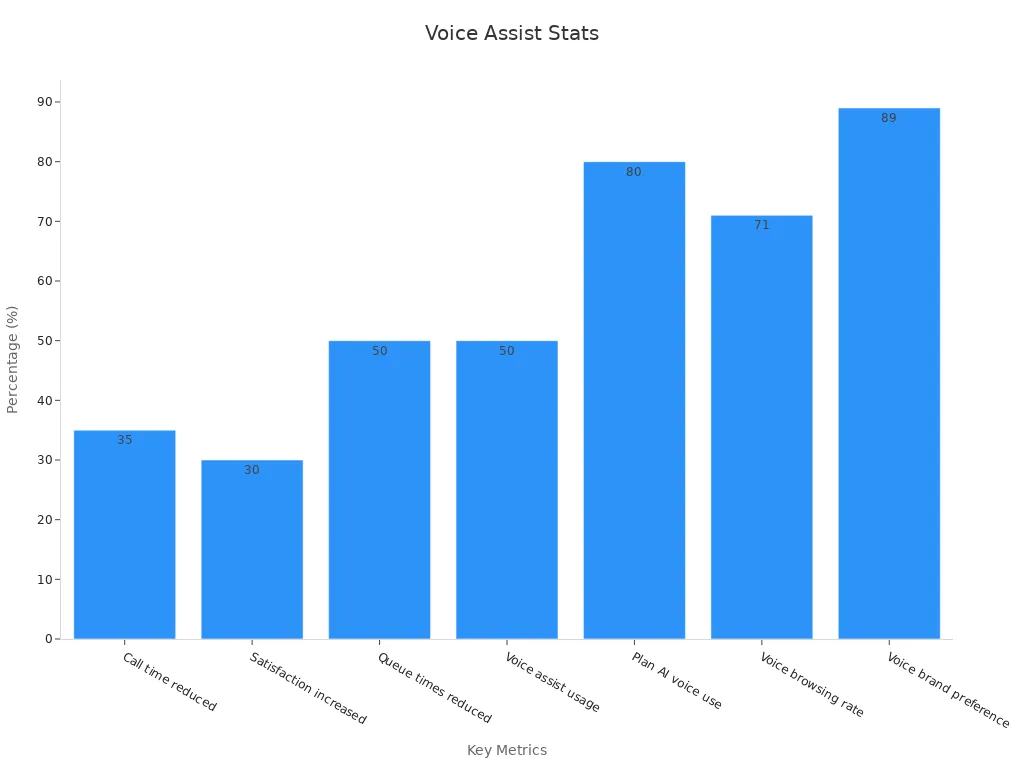
Ethical Considerations in Automation
Automation in customer service brings many benefits, but it also raises ethical questions. As you implement automated customer service, you must consider how it impacts privacy, fairness, and transparency. Customers trust you with their data, so protecting it should be your top priority. According to a study by Cisco, 84% of consumers care about data privacy, and 48% have switched companies due to data misuse. This highlights the importance of secure systems.
You should also ensure fairness in automation. AI systems can unintentionally reflect biases present in their training data. For example, if a chatbot prioritizes certain customer groups, it may alienate others. Regular audits of your automated systems can help identify and correct such issues. Sobot’s AI solutions prioritize compliance with data protection regulations like GDPR, ensuring ethical use of customer data.
Transparency is another critical factor. Customers should know when they are interacting with a bot versus a human. Clear communication builds trust and avoids confusion. For instance, Sobot’s chatbot operates with transparency, providing users with clear options to escalate issues to human agents when needed. By addressing these ethical considerations, you can build a responsible and trustworthy automated customer service system.
The Role of Automation in Omnichannel Support
Omnichannel support ensures seamless customer interactions across multiple platforms. Automation plays a vital role in making this possible. It allows you to unify customer data and provide consistent service, whether customers contact you via email, live chat, or social media. A report by Aberdeen Group found that companies with strong omnichannel strategies retain 89% of their customers, compared to 33% for those without.
Sobot’s omnichannel chatbot exemplifies this capability. It integrates with platforms like WhatsApp, SMS, and live chat, creating a unified workspace for your team. This ensures that customers receive consistent support, regardless of the channel they use. For example, OPPO used Sobot’s solutions to integrate global customer channels, improving data accessibility and service quality.
Automation also enhances efficiency in omnichannel support. It reduces response times by routing inquiries to the right channels and agents. Predictive analytics, a feature of Sobot’s AI solutions, helps you anticipate customer needs and offer proactive support. By leveraging automation in omnichannel strategies, you can improve customer satisfaction and stay ahead in a competitive market.
Automated customer service offers transformative benefits, such as cost savings, scalability, and improved customer satisfaction. However, it also presents challenges like high implementation costs and the risk of losing the human touch. For instance, US companies lose $75 billion annually due to poor customer service, highlighting the importance of a balanced approach. Only 25% of call centers have successfully integrated AI automation, leaving significant untapped potential for innovation.
| Statistic | Value | Description |
|---|---|---|
| $75 billion | Yearly loss | US companies lose this amount due to poor customer service |
| 25% | Successful integration | Only this percentage of call centers have integrated AI automation |
| 75% | Untapped potential | Represents the gap for companies to embrace AI innovation |
| $10,000 | Cost of replacing an agent | This is the cost incurred before considering lost productivity and customer satisfaction |
| 76% | Employee engagement | Percentage of employees reporting higher engagement when experiencing empathy from leaders |
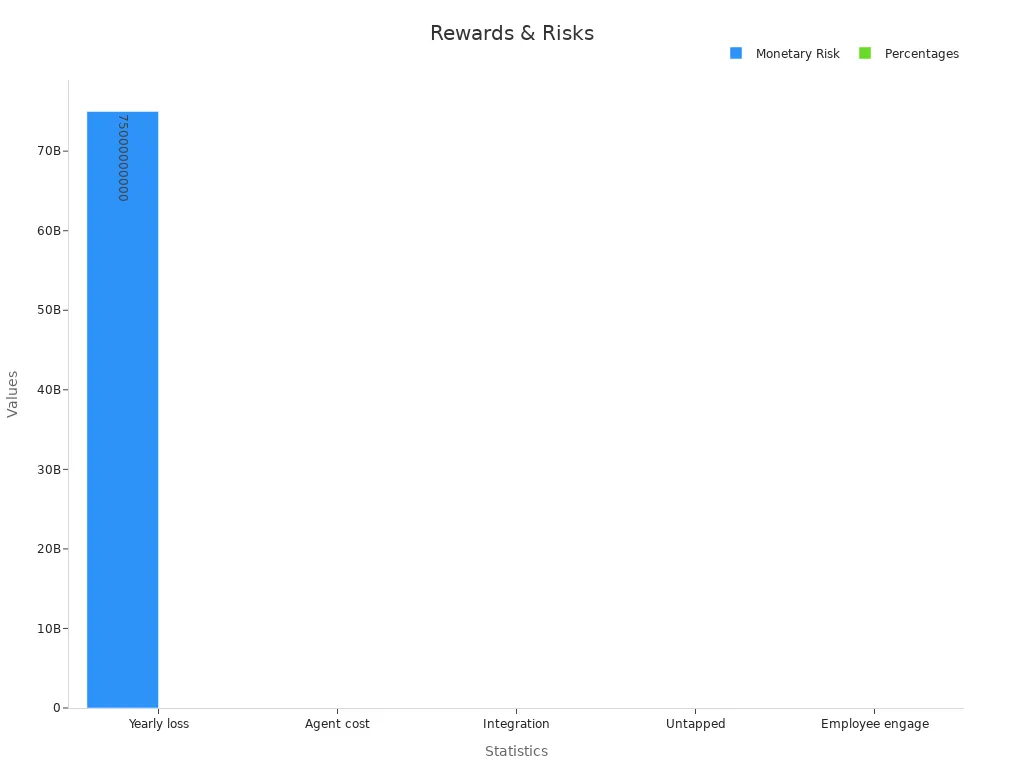
To succeed, you must adopt a customer service strategy that combines automation with human interaction. Tools like Sobot’s AI-powered chatbot ensure seamless customer service operations while maintaining a human fallback for complex issues. Thoughtful implementation of automation not only enhances efficiency but also builds trust and loyalty, ensuring long-term success.
FAQ
1. What is automated customer service, and why is it important?
Automated customer service uses AI and technology to handle customer inquiries without human intervention. It improves efficiency, reduces costs, and ensures 24/7 availability. For example, Sobot’s AI-powered chatbot resolves 83% of queries autonomously, enhancing customer satisfaction and operational efficiency. This approach is vital for businesses aiming to scale effectively.
2. How does automation improve customer satisfaction?
Automation ensures faster responses and consistent service. Tools like Sobot’s chatbot provide instant replies, reducing wait times. Its multilingual support allows you to connect with diverse audiences. According to Salesforce, 89% of customers are more likely to return after a positive automated service experience, proving its impact on satisfaction.
3. Can automated systems handle complex customer issues?
Automated systems excel at routine tasks but may struggle with complex or emotional issues. Sobot’s solutions address this by offering human fallback options. For example, unresolved queries can escalate to skilled agents, ensuring customers receive the empathy and expertise they need for challenging situations.
4. What are the cost benefits of automated customer service?
Automation reduces operational costs by handling repetitive tasks. Sobot’s chatbot saves up to 50% on agent expenses by triaging queries 24/7. Businesses using automation report a 40% reduction in service costs, making it a cost-effective solution for improving efficiency and profitability.
5. How can you ensure your automated system remains effective?
Regular monitoring and updates keep your system efficient. Sobot’s chatbot includes advanced reporting tools to track performance metrics like resolution rates. By analyzing this data, you can identify areas for improvement and ensure your system meets evolving customer needs while maintaining high service standards.
See Also
Enhancing Efficiency With AI-Driven Customer Service Solutions
Transforming Support Through AI Customer Service Agents
An In-Depth Look At AI Call Center Solutions
